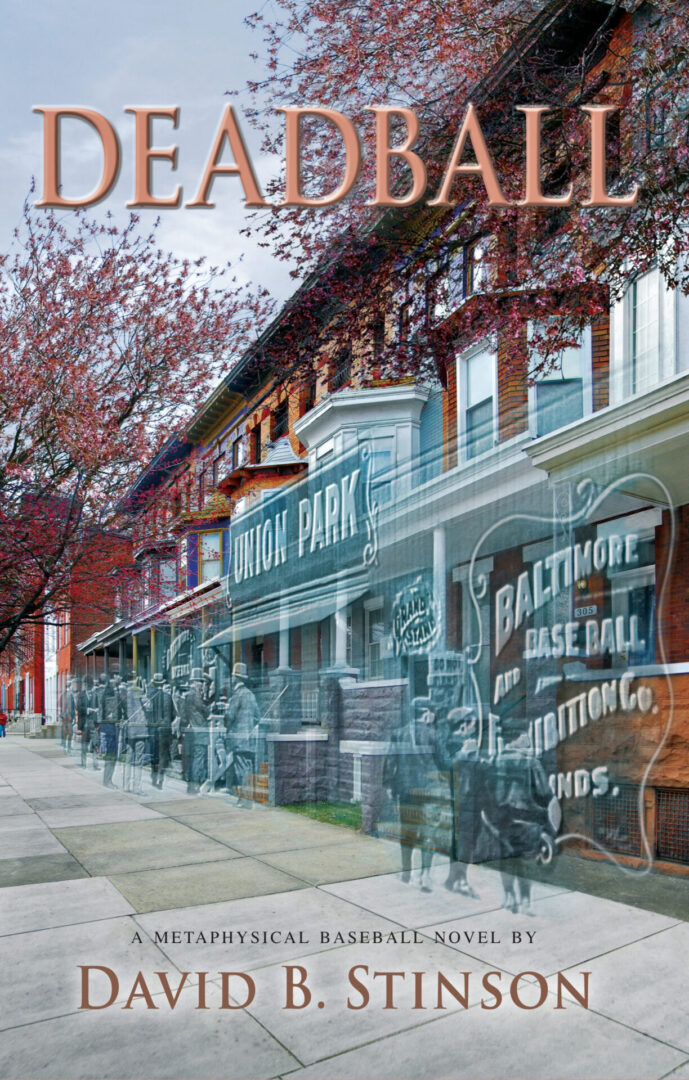Professional baseball was once played in the southernmost point of the United States at a place known as Wickers Stadium (also known as Wickers Field) in Key West, Florida.
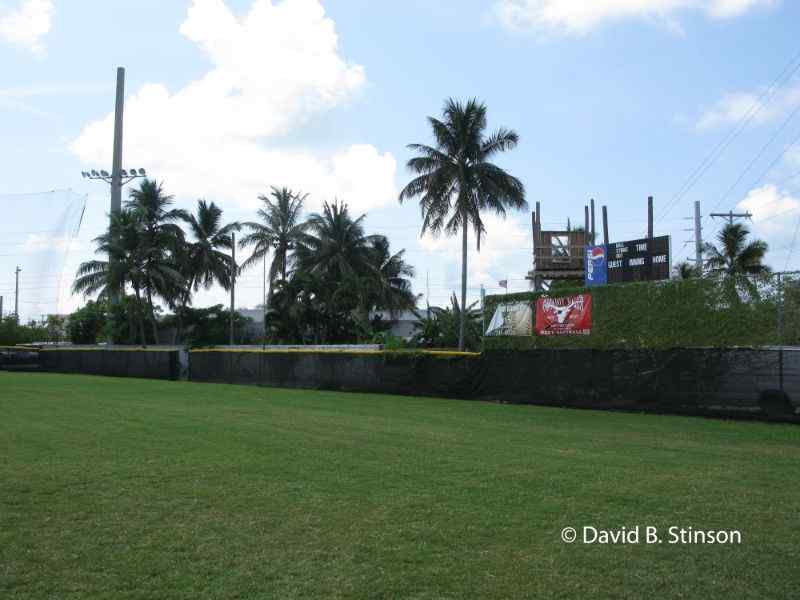
In 1952, the Key West Conchs played a portion of their Florida International League games there.
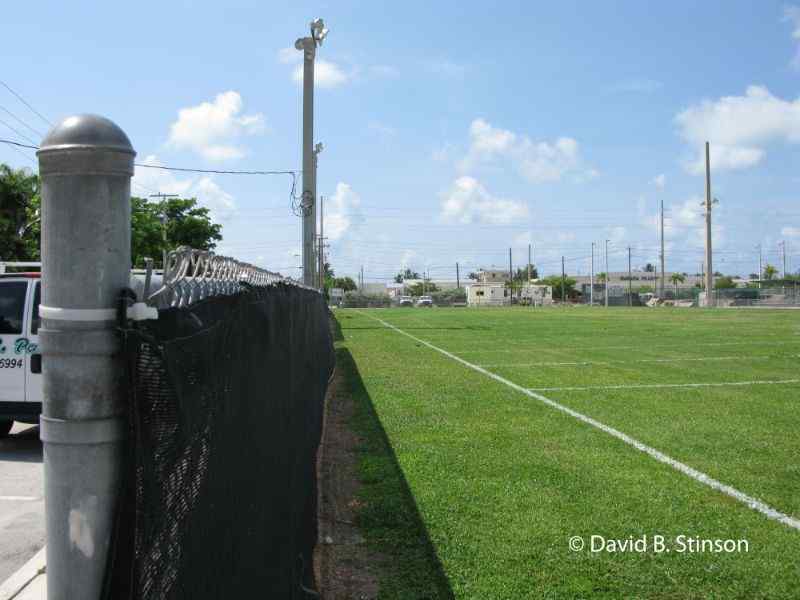
In 1969, it was the Key West Padres (managed by Don Zimmer) and, during the early to mid 1970s, it was the Key West Sun Caps, Key West Conchs, and Key West Cubs, all of the Forida State League, that played their home games at Wickers Stadium.

The grandstand covered only the two sections behind home plate (thanks to former Key West Resident Don for providing the following picture Wickers Stadium).
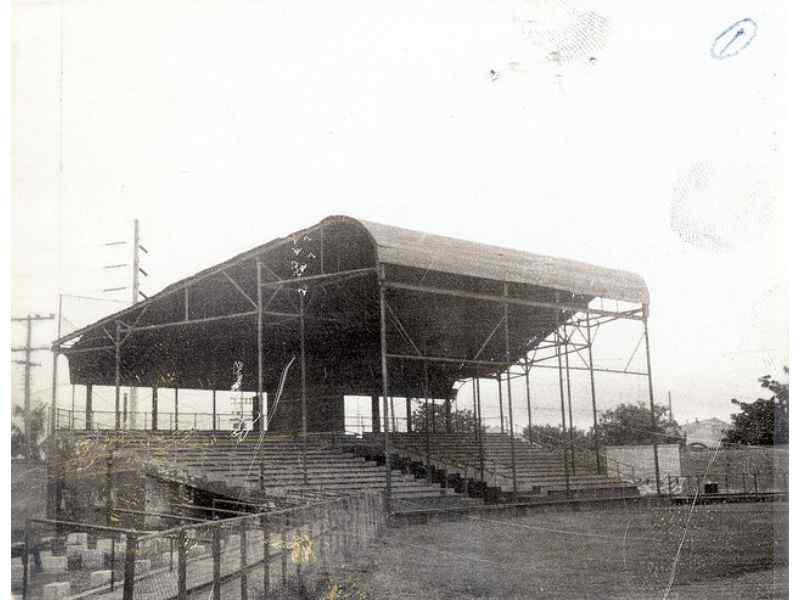
According to locals I spoke to at the site, the ballpark itself was of modest size, holding no more than a couple thousand fans. According to alert reader Dave Roberts, the grandstand and home plate were at the corner of 14th Street between Duck and Pearl Ave. The third base line was parallel to 14th.
Center Field was located at the intersection of President Kennedy Drive and Flagler Avenue in Key West, Florida.
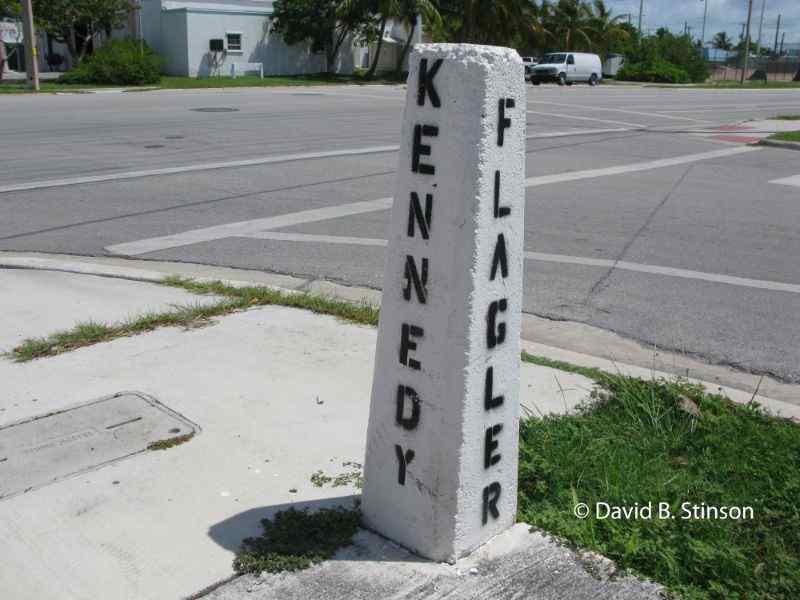
Wickers Stadium is gone now, but the area remains a public park known officially as the Wickers Sports Complex. The complex houses both a youth football field and a softball diamond. Along what was once the third base grandstand now sits the George Mira Football Field.
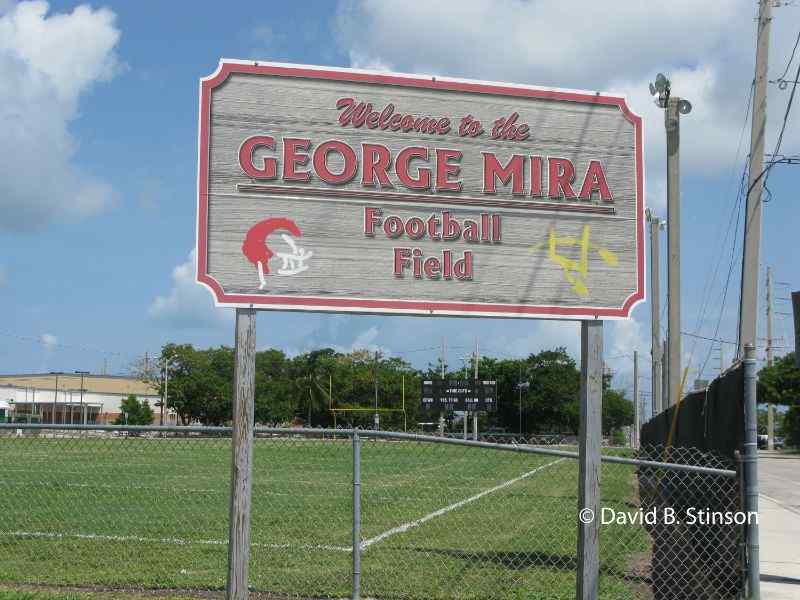
George Mira, who was born in Key West, played quarterback for the University of Miami, and later played professional football for the San Francisco 49ers, the Philadelphia Eagles, and the Miami Dolphins.

The football field today is used mainly for youth football, although, at the time of Wickers Stadium, high school teams used to play at there on a different configuration of the field.
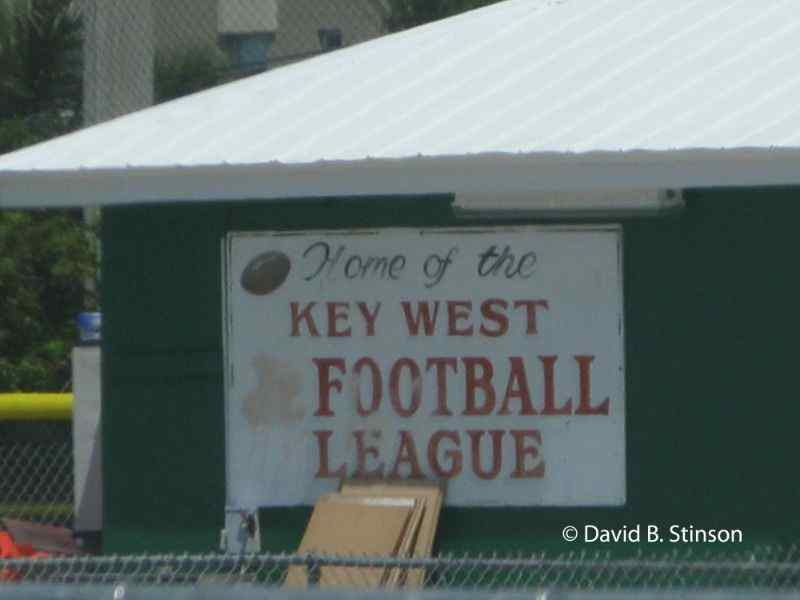
The DeWitt E. Roberts Softball Diamond sits on the first base side of old Wicker Stadium.

The infield sits in the approximate location of Wicker Stadium’s right field.
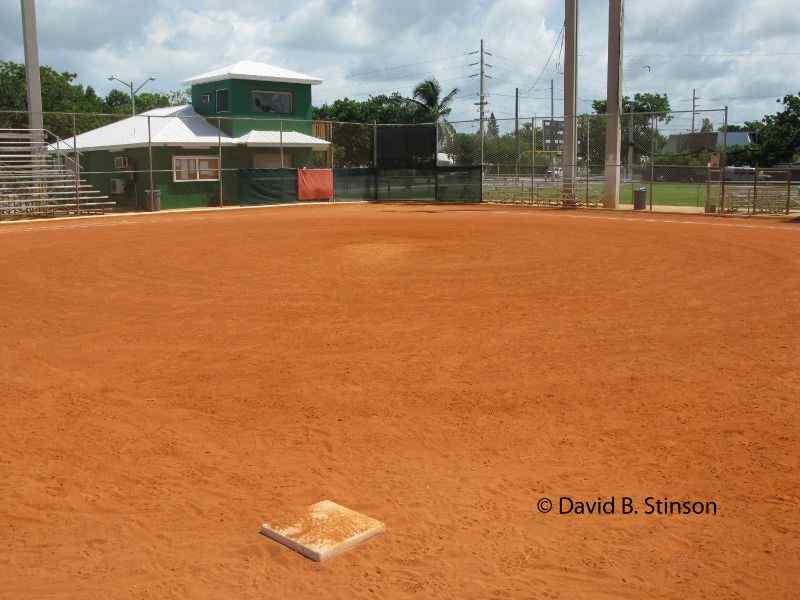
Although Wickers Stadium has been demolished, a portion does remain, namely, a 10 foot tall concrete and cinderblock wall that once surrounded the center field portion of the stadium.

The wall is located beyond the softball diamond’s center field fence.

The original wall can be seen in this vintage photo of Wickers Stadium taken just prior to the stadium’s demolition. Former Key West Sun Cap Dave Horton kindly supplied the photo.
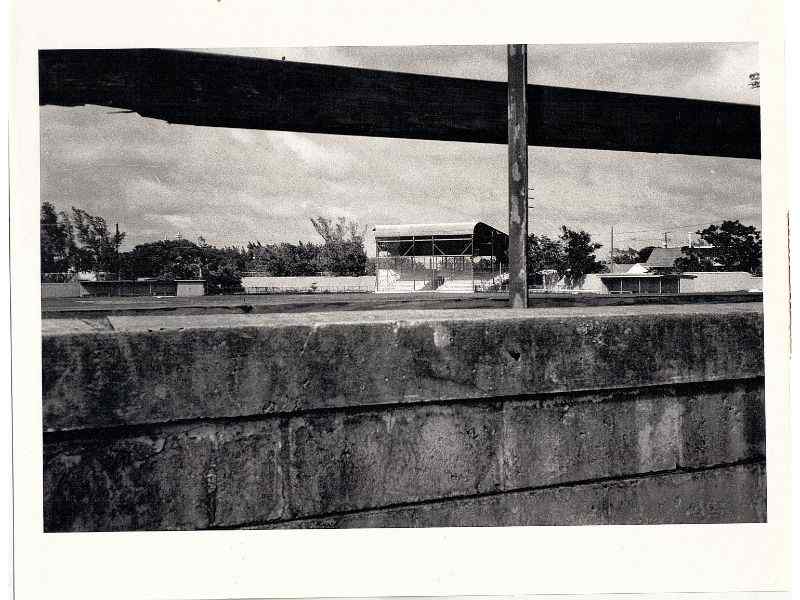
The original wall is accessible through a gate in the current center field fence.

Who knows how many Conchs, Padres, Caps, and Cubs luminaries once might have sat on this now-forlorn bench.

One additional vestige of Wickers Stadium remains across Flagler Avenue – a vintage sign advertising “Stadium Apartments” one block north of the former stadium on 14th Street.
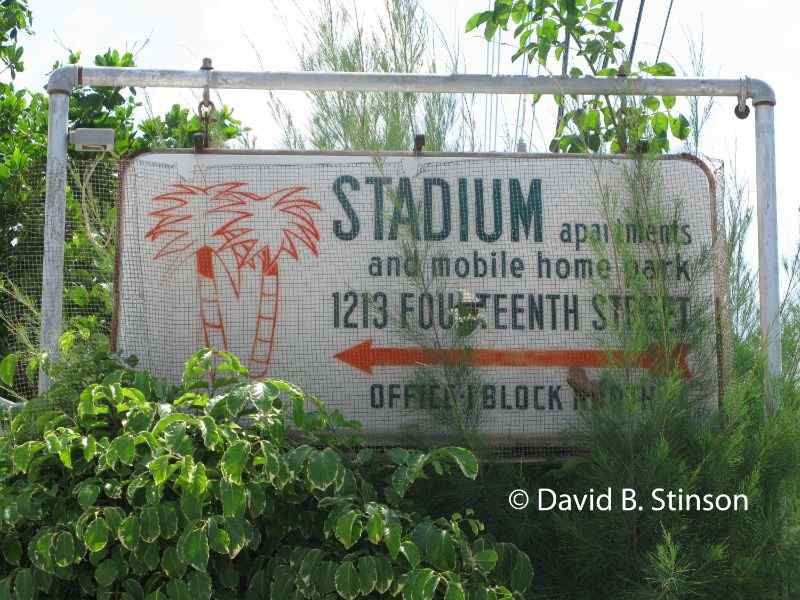
Although Wickers Stadium is now just another lost ballpark, its former site remains a place where one can still hear the crack of the bat (okay, the ping of the bat) at the DeWitt E. Reynolds softball field. So, if you ever find yourself in the southernmost point of the United States, longing for a taste of the National Pastime’s “pastime,” pay a visit to the Wickers Sports Complex. When there, be sure to stop by the old outfield wall located beyond center field. It’s part of the game’s history, although, I do not suggest anyone sit on the park bench.
